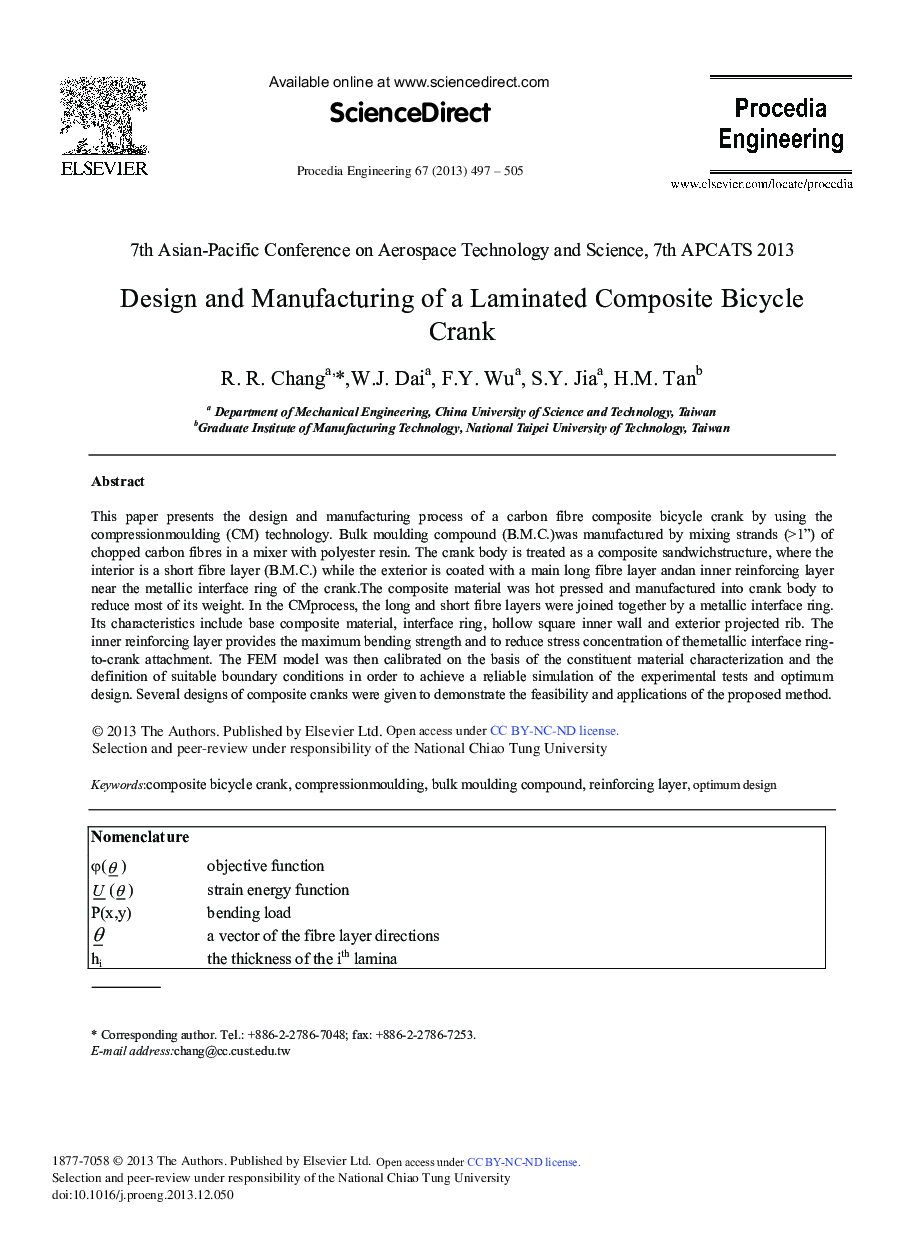| Article ID | Journal | Published Year | Pages | File Type |
|---|---|---|---|---|
| 858739 | Procedia Engineering | 2013 | 9 Pages |
This paper presents the design and manufacturing process of a carbon fibre composite bicycle crank by using the compressionmoulding (CM) technology. Bulk moulding compound (B.M.C.)was manufactured by mixing strands (>1”) of chopped carbon fibres in a mixer with polyester resin. The crank body is treated as a composite sandwichstructure, where the interior is a short fibre layer (B.M.C.) while the exterior is coated with a main long fibre layer andan inner reinforcing layer near the metallic interface ring of the crank.The composite material was hot pressed and manufactured into crank body to reduce most of its weight. In the CMprocess, the long and short fibre layers were joined together by a metallic interface ring. Its characteristics include base composite material, interface ring, hollow square inner wall and exterior projected rib. The inner reinforcing layer provides the maximum bending strength and to reduce stress concentration of themetallic interface ring- to-crank attachment. The FEM model was then calibrated on the basis of the constituent material characterization and the definition of suitable boundary conditions in order to achieve a reliable simulation of the experimental tests and optimum design. Several designs of composite cranks were given to demonstrate the feasibility and applications of the proposed method.
